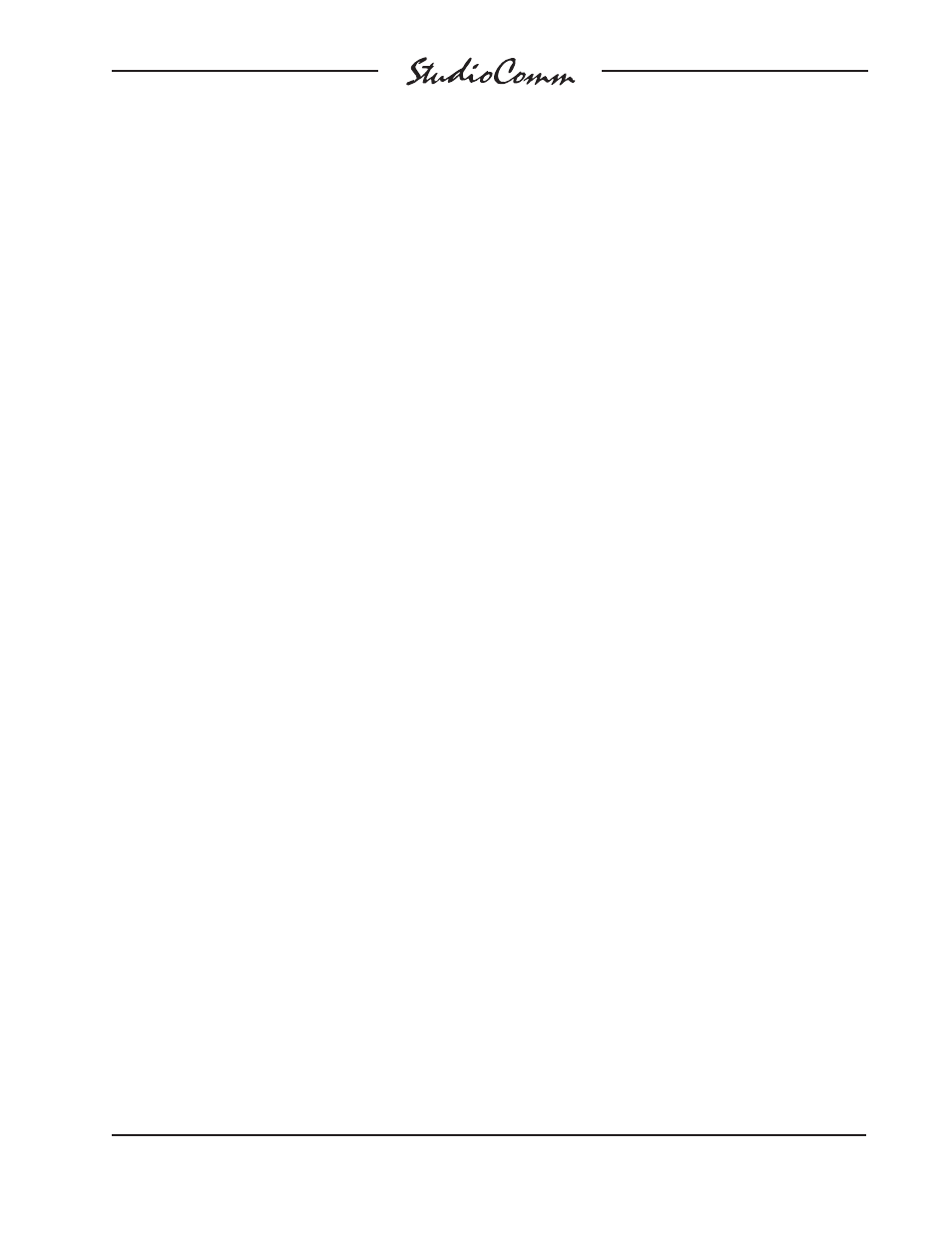Reference level in db spl, Dialnorm reference level, Dialnorm data to surround input assignment – Studio Technologies 76B 2008 User Manual
Page 19: Dim level, Remote mute all

Model 76B/77B User Guide
Issue 1, July 2008
Studio Technologies, Inc.
Page 19
for Surround
sound pressure level (SPL). Used in con-
junction with the reference level in dB SPL
confi guration and the stored reference
level, SPL mode allows a user to see a
visual representation of the SPL level that
is present in the listening environment.
While it takes a little more care to correctly
implement the SPL display mode, it can
offer an enhanced experience for Studio-
Comm users.
Reference Level in dB SPL
The reference level in dB SPL confi gu-
ration allows a specifi c SPL value to be
associated with the stored reference level
value. In this way whenever the moni-
tor output is at the reference level, either
through activating the reference level func-
tion or manually adjusting the rotary level
control, the Model 77B’s display will show
the confi gured SPL level. Whenever the
monitor output is not at the reference value
the display will show the current value, in
dB, relative to the reference level. The ref-
erence level in dB SPL can be confi gured
over a range of 70.0 to 100.0 dB in 1.0-dB
steps. In many applications a value of 85
would be appropriate, refl ecting the widely
used audio-for-picture 85 dB monitoring
reference level. (Typically this 85 dB is
really 85 dBC, indicating that a C-weight-
ing fi lter has been applied to the mea-
surement.) Other common reference SPL
values, such as 82 and 87, are well within
the allowable range.
Dialnorm Reference Level
The dialnorm reference level parameter is
provided so that the StudioComm system
can be confi gured to match a facilities’ or
“plant” default dialnorm level. This value is
used as a reference against which the sur-
round monitor output level will, if enabled,
be adjusted up or down in response to an
incoming dialnorm value. The dialnorm
reference level parameter can be adjusted
over the entire –31 to –1 dB range but
typical values will be in the range of –27 to
–24. Implementation purists might want to
select –31 dB as it may well be the “truest”
implementation of the dialnorm scheme.
In this way the system will, when enabled,
reduce the monitor output level whenever
dialnorm is different than –31 dB. But as
bar fi ghts have broken out over decisions
such as this we’ll leave the choice up to
you! For additional information about dial-
norm refer to the Technical Notes section
of this user guide.
Dialnorm Data to Surround
Input Assignment
For correct operation the connected Dolby
E dialnorm data must be assigned to work
in conjunction with its associated surround
input. In this way the dialnorm data will
only display, and level changes will only
take place, when the appropriate surround
input is selected by an operator.
Dim Level
The dim function is used to reduce the
monitor output level by a preset amount.
The reduction is in dB relative to the moni-
tor output’s current level. There are four
dim level values available: –10.0, –15.0,
–20.0, and –25.0 dB.
Remote Mute All
Two confi guration choices are associated
with the remote mute all function: disabled
and enabled. To utilize the remote mute all
function simply requires you to select the
enabled setting.
